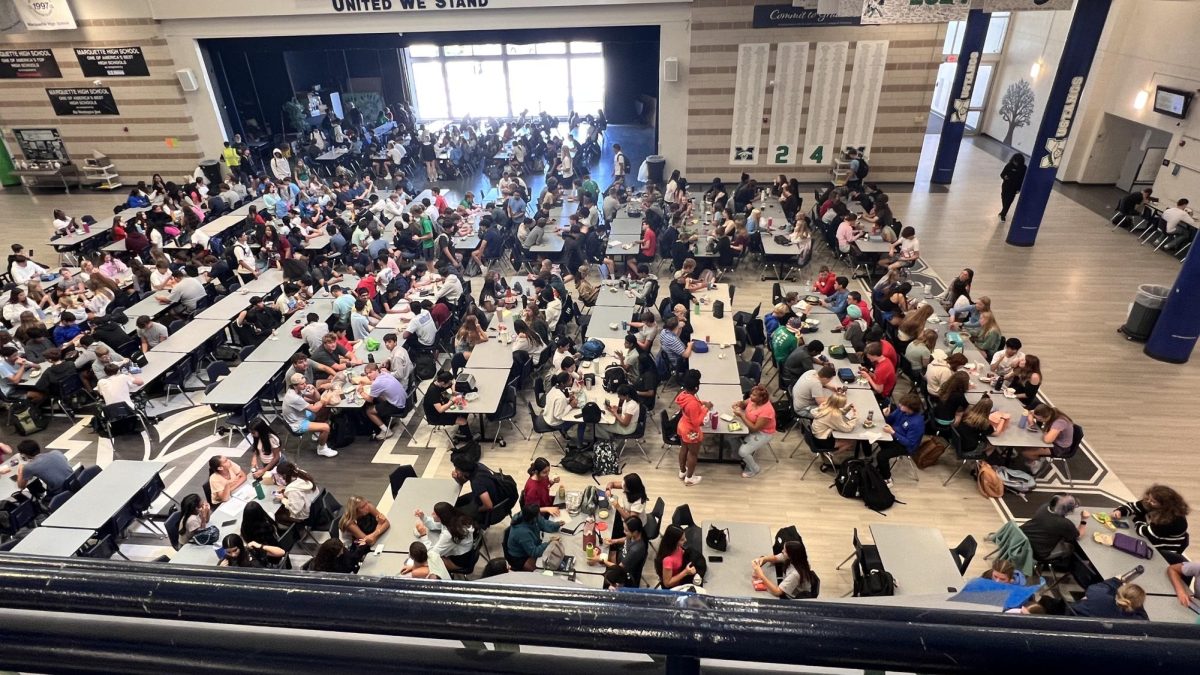When Christian Kelly, senior, entered the cafeteria on the first day of school, the first things he noticed were longer lines, more tables and many more students than last school year.
“The main challenge is that it’s hard to find a table,” Kelly said. “It’s just the lack of seats; you can’t sit with your friends anymore.”
This school year, MHS is moving to three lunch shifts, eliminating fourth lunch and adding a break between the second and third shift.
Kelly said he understands the school administration’s decision, but he doesn’t see a significant benefit for removing the fourth lunch shift.
Sophomore Principal Dr. Rick Regina said MHS had three lunch shifts before 2020. Due to limited lunch staff during COVID-19, the administration added a shift to lessen the number of students being served in each 30-minute period.
“We’re past the pandemic and we feel it’s time we can go back to three lunch shifts,” Dr. Regina said.
Dr. Regina said it’s slightly more crowded in the lunchroom, and having roughly 150 more students each lunch shift is certainly a challenge for the lunch staff.
“I definitely like having three lunch shifts; it goes by faster,” Dr. Regina said, “and I’m proud of our kitchen staff for being up to the challenge.”
Principal Dr. Tracey Waeckerle said that by moving to three shifts, an extra 30 minutes could be removed from fourth hour and filtered into other classes. With the additional minutes, A-Day classes are now long enough for teachers to test and have more freedom in their lesson plans, Dr. Waeckerle said.
“It’s only five or six minutes more per class, but that’s a big impact if the teacher is trying to run a lab, test or another activity,” Dr. Waeckerle said.
The break between second and third lunch allows more time for lunch workers to restock and reset for the next shift, and means that there is one fewer lunch shift for custodians to clean up after.
Dr. Waeckerle said that so far there have been no issues with students not having enough time to eat and that the change has been successful.
Liz Pease, language arts teacher, said that she has noticed the additional time in A-Day classes and needs to adjust lesson plans accordingly.
“I didn’t have enough content over the first few days. I had more time at the end of class than I was anticipating. But with it being the first couple of days, I was okay with it,” Pease said.
However, Pease said that overall, not much has changed. She is still able to get what she needs done each day. Pease also said student behavior before and after the switch has not been altered.
“Before lunch, the students are very hungry and dazed. After lunch, they’re tired and want to take a nap. But I’ve gotten used to it and it hasn’t changed from last year,” Pease said.





